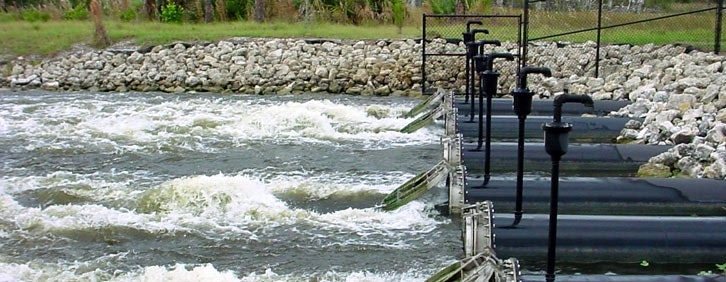Stormwater Drainage Systems in South Florida

May 20, 2020 By Katie Roundtree
South Florida’s terrain is low and flat and was once covered in marshes and swamps. Once development started in southern Florida, much of that land was drained and a system of flood control systems were put in place to counteract the loss of marshes and swamps. Flood control is achieved through an interconnected drainage system made up of swales, conduits, canals and ultimately the ocean.
Yards, streets and parking lots are also important features in the water management system. A neighborhood stormwater system is designed to store excess water in streets, swales, yards and low-lying areas during heavy rain in order to keep water away from homes and businesses. Some standing water is normal and expected after rain. Generally flood waters in these areas recede quickly as they are designed to direct water flow into storm drains; however, during periods of excessive rain or when the ground is saturated from prior heavy rains, it may take longer to drain.
Water management systems throughout South Florida are interconnected and can be affected by other neighborhoods in the surrounding area. Developments may be designed to drain through other developments downstream. If heavy rains occur in one area, the effects might be felt several miles away. If one section of the system is full, then more water cannot physically be discharged into that section, creating a backup at that point. Every neighborhood drains differently. If other neighborhoods are experiencing heavy rains, local and regional canals may not be able to accept all inflows at once. Additionally, if the water table is high due to excessive rains, than water cannot soak into the already saturated ground, causing water to remain in swales and yards longer than at other times. Swales and grassy areas are important features in the water management system because they help to convey water, but in addition, they help to recharge the underground aquifer and improve water quality by filtering out sediments and nutrients.
Northern Palm Beach County Improvement District is constantly inspecting and maintaining its various swales, culverts, canals, and pump stations in order to ensure that the system is in top operating condition. Staff members are on call 24/7 to monitor and remotely operate many of the water control structures within the District.
Prior to a storm event, Northern staff will monitor water levels and may lower the water level below a designed control point if warranted and within South Florida Water Management District’s approved procedures. Northern is in contact with the South Florida Water Management District, Palm Beach County and surrounding municipalities prior to and during storm events as needed.
We live in an area where seasonal rains fall on low, flat lands that offer little natural drainage. The natural slope of land from Lake Okeechobee south to Florida Bay is only about one inch per mile. (Source: SFWMD) Most drainage is through the interconnected waterways and structures designed to alleviate flooding as quickly as possible. Understanding how this system works as well as its limitations may help ease the concerns of residents in our area. You can learn more at www.sfwmd.gov/rainyseason.
